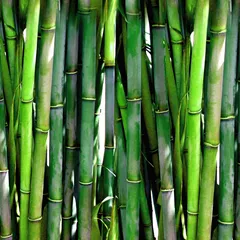Heat in Gall Bladder
The information provided here is not a replacement for a doctor. You shouldn't use it for the purpose of self-diagnosing or self-medicating but rather so you can have a more informed discussion with a professional TCM practitioner.
At a glance
Preliminary reading: What is a pattern?
Diagnosis
Common symptoms: Thirst Nausea Epigastrium fullness Bitter taste in the mouth Stifling sensation in the chest and three other symptoms
Pulse type(s): Rapid (Shu), Wiry (Xian)
Tongue coating: Thick coating, Yellow coating
Tongue color: Red
Treatment
Common formulas: Hao Qin Qing Dan Tang
Pathology
Heat in Gall Bladder is a pattern of disharmony in Chinese Medicine.
Chinese Medicine views the human body as a complex system that tends toward harmony. A pattern of disharmony is a disorder that prevents that harmony from occurring.
Patterns give rise to symptoms that may at first glance seem unrelated from a Western standpoint but that actually make a lot of sense when one understands Chinese Medicine theory. For instance here Heat in Gall Bladder gives rise to such diverse symptoms as mild chills alternating with pronounced fever, bitter taste in the mouth, stifling sensation in the chest and spitting up bitter or sour fluids (as well as four others).
To diagnose a pattern, analyzing a patient's pulse as well as their tongue is common practice. In the case of Heat in Gall Bladder patients tend to exhibit rapid (Shu) or wiry (Xian) pulses as well as a red tongue with thick coating, yellow coating.
Patterns aren't exactly the Chinese Medicine equivalent to Western diseases, they're rather the underlying causes behind diseases or health conditions. Here Heat in Gall Bladder is thought to sometimes induce conditions such as hypertension, cholecystitis or pelvic inflammatory disease (as well as nine others).
Diagnosing Heat in Gall Bladder
Diagnosing a pattern in Chinese Medicine is no easy feat and should be left to professional practitioners. In particular one has to know how to differentiate between different types of pulses and tongue coatings, shapes and colors as well as learn to read from a long list of seemingly unrelated symptoms.
Pulse type(s): Rapid (Shu) or wiry (Xian)
Tongue coating: Thick coating, Yellow coating
Tongue color: Red
Main symptoms: Thirst Nausea Epigastrium fullness Bitter taste in the mouth Stifling sensation in the chest Spitting up bitter or sour fluids Mild chills alternating with pronounced fever Distention and pain in the chest and hypochondria
Treating Heat in Gall Bladder
Herbal formulas used to treat Heat in Gall Bladder



The top herbs in Hao Qin Qing Dan Tang are Sweet Wormwood Herbs (Qing Hao), Baikal Skullcap Roots (Huang Qin) and Bamboo Shavings (Zhu Ru)
Hao Qin Qing Dan Tang
Source date: Qing Dynasty
Number of ingredients: 10 herbs
Key actions: Clears Heat and relieves acute conditions of the Gallbladder. Relieves acute Damp-Heat syndromes. Resolves Phlegm. Harmonizes the Stomach.
Formula summary
Hao Qin Qing Dan Tang is a 10-ingredient Chinese Medicine formula. Invented in Qing Dynasty, it belongs to the category of formulas that harmonize lesser Yang-warp disorders.
Besides Heat in Gall Bladder, Hao Qin Qing Dan Tang is also used to treat Gallbladder Heat or Phlegm.
Related conditions
Please keep in mind that a Western Medicine condition can be caused by several Chinese Medicine patterns of disharmony and vice versa. As such a patient suffering from one of the conditions below will not necessarily be suffering from Heat in Gall Bladder, it is just one pattern that's commonly associated with the condition. Click on a condition to learn what other patterns it's associated with.
Hypertension Cholecystitis Pelvic inflammatory disease Pyelonephritis Icteric hepatitis Malaria Typhoid Pneumonia Leptospirosis Reflux gastritis Aural vertigo Coronary artery disease
